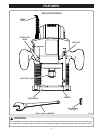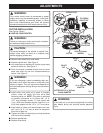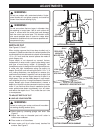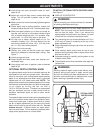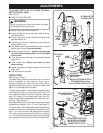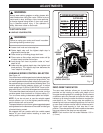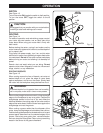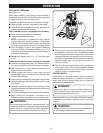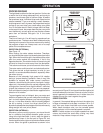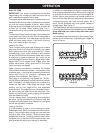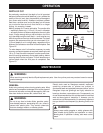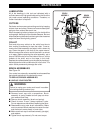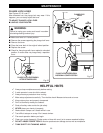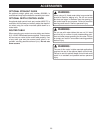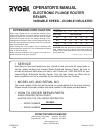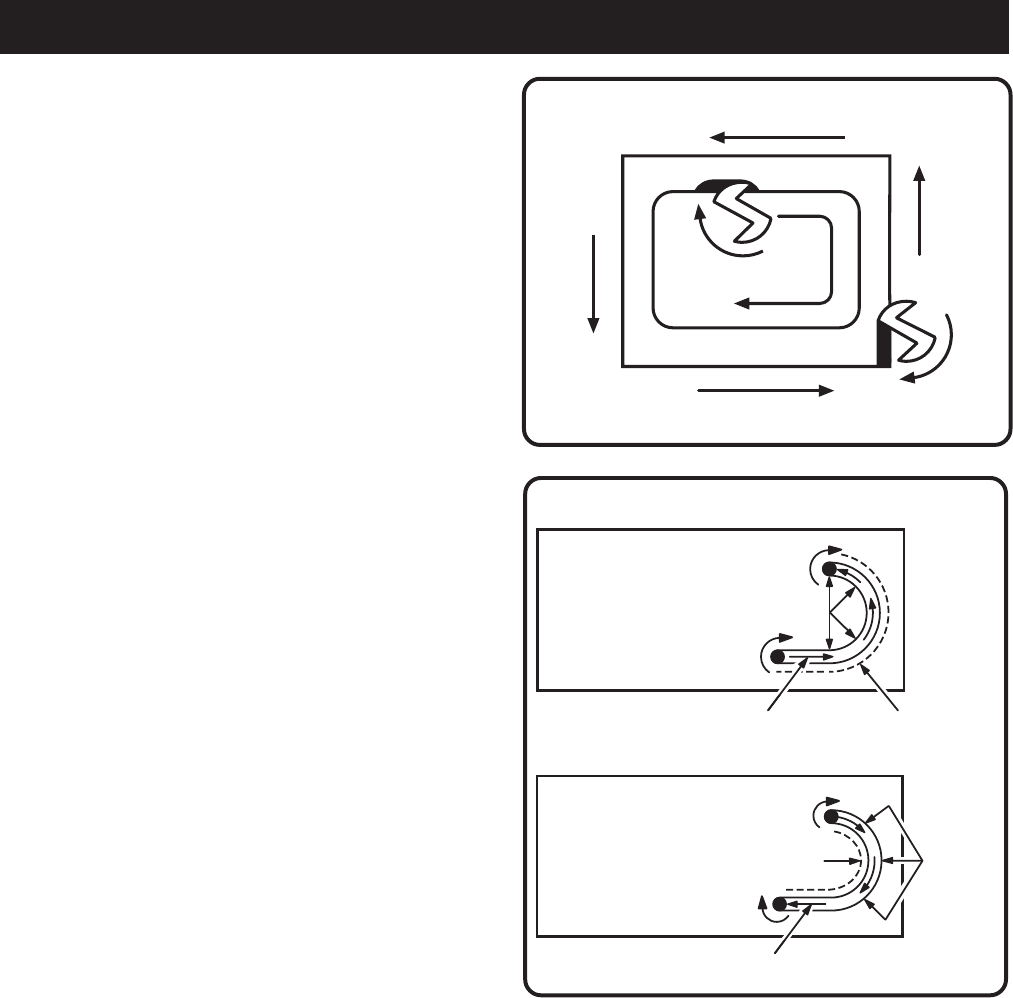
18
PROPER FEEDING
The right feed is neither too fast nor too slow. It is the rate
at which the bit is being advanced firmly and surely to
produce a continuous spiral of uniform chips. A feed to
fast produces large, individual chips and a feed to slow
creates sawdust. If you are making a small diameter,
shallow groove in soft, dry wood, the proper feed may be
as fast as you can travel your router along your guide
line. On the other hand, if the bit is large, the cut is deep,
or the wood is hard, the proper feed may be a very slow
one. Additionally, a cross-grain cut may require a slower
pace than an identical with-grain cut in the same
workpiece.
There is no fixed rule. You will learn by experience from
practice and use. The best rate of feed is determined by
listening to the sound of the router motor and by feeling
the progress of each cut. Always test a cut on a scrap
piece of the workpiece wood.
DIRECTION (EXTERNAL)
See Figure 19.
When routing, the cutter rotates clockwise. Therefore,
you should feed the router into the workpiece from left to
right. When fed from left to right, the rotation of the cutter
pulls the router against the workpiece. If fed in the
opposite direction, the rotation forces of the spinning bit
will tend to throw the router away from the workpiece.
This action could cause you to lose control of the router.
The router motor and bit revolve in a clockwise direction.
This gives the tool a slight tendency to twist (in your
hands) in a counterclockwise direction, especially when
the motor revs up.
Because of the extremely high speed of bit rotation
during a “proper feeding” operation, there is very little
kickback to contend with under normal conditions.
However, should the bit strike a knot, hard grain, foreign
object, etc. that would affect the normal progress of the
cutting action, there will be a slight kickback—sufficient
to spoil the trueness of your cut if you are not prepared.
Such a kickback is always in the direction opposite to the
direction of bit rotation.
To guard against such a kickback, plan your setup and
direction of feed so that you will always be thrusting the
tool—to hold it against whatever you are using to guide
the cut—in the same direction that the leading edge of
the bit is moving. In short, the thrust should be in a
direction that keeps the sharp edges of the bit continuously
biting straight into new (uncut) wood.
DIRECTION (INTERNAL)
Whenever you are routing a groove, your travel should
be in a direction that places whatever guide you are
using at the right-hand side. In short, when the guide is
positioned as shown in the first part of Figure 20, tool
travel should be left to right and counterclockwise around
curves. When the guide is positioned as shown in the
OPERATION
ROUTER FEED
DIRECTION
ROUTER FEED
DIRECTION
ROUT END GRAINS FIRST
BIT
ROTATION
Fig. 19
Fig. 20
ROUTER FEED
DIRECTION
THRUST
GUIDE OUTSIDE
GUIDE
FEED
THRUST
BIT ROTATION
GUIDE
FEED
GUIDE INSIDE
BIT ROTATION
second part of Figure 20, tool travel should be right to left
and clockwise around curves. If there is a choice, the first
setup is generally the easiest to use. In either case, the
sideways thrust you use is against the guide.
SPEED CONTROL
In general, if the material being cut is hard, the cutter size
is large, or the depth of cut is deep - maximum 1/8 in. (3.2
mm), then your router should be run at slower speeds.
When these situations exist, turn the variable speed
control selector until the desired speed is reached.
NOTE: Carbide cutters cut at higher speeds than steel
cutters and should be used when cutting very hard
materials. Keep cutters sharp at all times.



